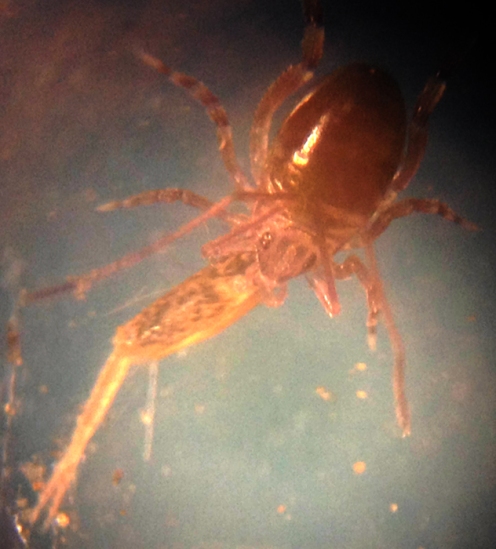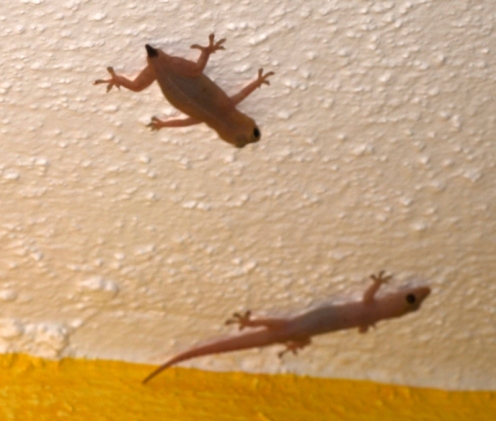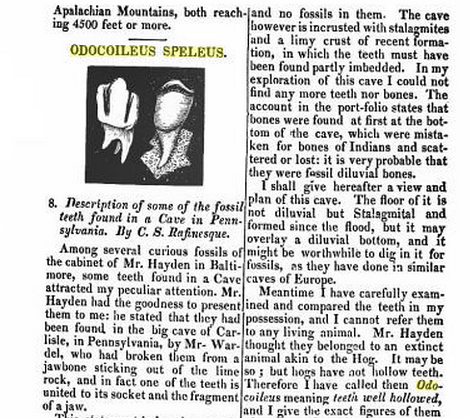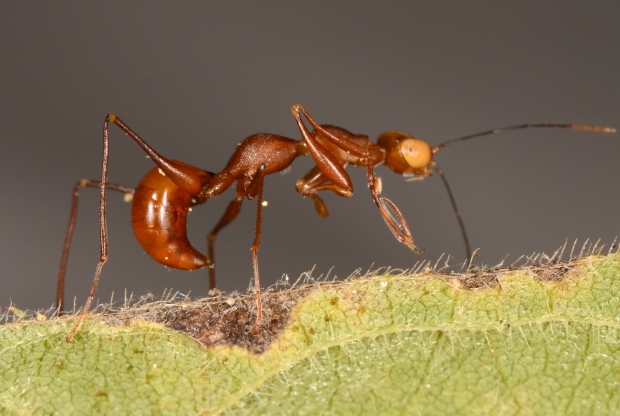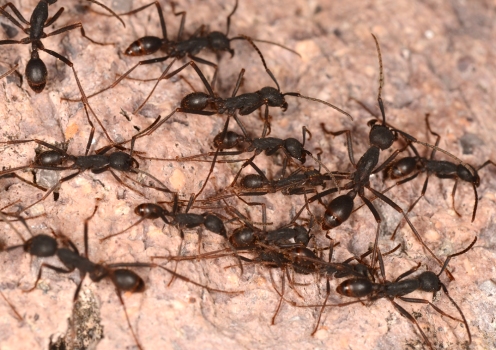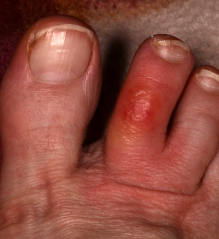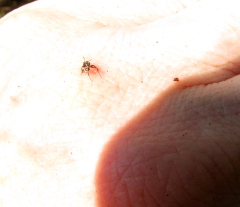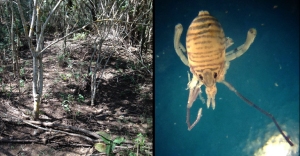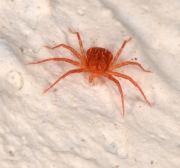Opilioacarid eating a pre-killed springtail! Next question is, can they dispatch their own collembolans?
Month: February 2014
Cancer vs pollex
A couple of days ago I was looking for spiders in a road-side strip of trees at Xametla beach at night, and saw a wee crab sitting in the middle of the road. I picked it up to save it from being squashed by a vehicle, or the boots of a fellow spider-hunter, and it pinched me on the thumb. Ungrateful crustacean! But then to my surprise, the crab separated from its claw and plopped into the palm of my hand while its autotomized chela kept on pinching.
Dropping appendages is a well-known defense in terrestrial arthropods like harvestmen, and in some vertebrates like geckos, but I had never heard of defensive autotomy in crustaceans. But, according to Tom Carefoot in his blog A Snail’s Odyssey, it’s quite a common behaviour in crabs.
So I’ve now been pinched (crab), stung (ants), or bitten (trombiculid mites, mosquitoes, ceratopogonids) by members of three major groups of arthropods during my stay at Chamela. Maybe I should next aim to be gnawed on by a pycnogonid.
Etymological deer-stalking
Earlier this year my friend John Acorn was frustrated by the genus name for white-tailed and mule deer: Odocoileus. Greek and Latin dictionaries didn’t help to make sense of it, no matter how potential roots were parsed. He enlisted me and Selina Stewart, a professor of classics at the University of Alberta, in the hunt for the origin of this name. It was an exciting few hours of Googling! Many emails were exchanged as we followed blind leads, downloaded uninformative pdfs, and speculated wildly. Then, by chance, I thought to look up where the description of the type species of Odocoileus was published, with the hope that the author of the genus had actually explained his rationale for choosing the name. To my surprise, neither O. virginianus nor O. hemionus – the only two extant members of the genus – turned out to be the type species. Instead, it was a deer I’d never heard of: Odocoileus speleus. A cave-dwelling deer? What could this mean? The author was C.S. Rafinesque, and the description was published in The Atlantic Journal, and Friend of Knowledge, Vol. 1, in 1832.
Rafinesque lived from 1783-1840 and had quite a diverse career, dabbling in zoology, botany, geology and Mesoamerican linguistics. He named many species of plants and animals in addition to cervids. Wikipedia calls Rafinesque a polymath, but he didn’t excel in all endeavours. For one thing, his stint as the botanist at Transylvania University in Kentucky ended badly after he had an affair with the wife of the university’s president. For another, he was quite careless with his spelling. This explains Odocoileus. The genus is based on a fossil (or possibly subfossil) tooth found in a cave – hence speleus. Rafinesque had intended the generic name of the tooth’s owner, which he thought might be a type of pig, to refer to the tooth’s hollowness (see excerpt below). But rather than Odontocoelus, which would have matched his intent well, he wrote the jumbled name that still stands today. There were two attempts at the beginning of the 1900’s to emend the spelling to something more etymologically, but these were deemed unjustified.
That spelling was a persistent challenge for Rafinesque is evidenced by his naming a population of white-tailed deer Corvus macrourus.
A(i)nts
Worker ants are nasty creatures that are always beating up on other animals, possibly because of sexual frustration, or maybe they feel oppressed by their queens and take out their anger on non-socialists. Whatever the reason, their short tempers and vicious weaponry mean that ants are given a wide berth by most smart organisms. This is probably why so many non-formicid arthropods try to look like ants. Here are two that we’ve collected as by-catch at Chamela.
(1) Pincher wasp (Dryinidae). At first I thought “scary ant about to sting!”. Then I thought “mantis pretending to be ant!”. Then “mantispid!”. Then “what the heck is it?”. Googling eventually brought me to the right family on BugGuide. Dryinids are both predators and parasitoids, which is quite unusual, and use their raptorial legs to grab hosts while ovipositing. Biology of this group is discussed here and here.
(2) Lacebug (Tingidae). At first I thought “Ant carrying a dead ant”. But it was behaving in a non-antly fashion so I took it back to the Chamela collections room and looked at it under a dissecting scope it was clearly a true bug. The fenestrations suggest that it is a lacebug. If it is indeed a tingid, then as far as I can tell this is a sufficiently rare phenomenon as to be unGoogleable. Has anyone else observed lacebugs that look like ants? UPDATE: I sent some of these to Laura Miller (West Virginia Department of Agriculture), a tingid expert, and they are indeed lacebugs. What’s more, they represent a new species of Aepycysta. Thanks, Laura!
In addition to these formiciform insects, we have seen a lot of neat salticids that do an excellent job of pretending to be ants.
Gasteroposting
Posting photographs of one’s food on the web (‘gastroposting’) has gone from bizarre, to hip, to mainstream enough for the Edmonton Journal. Soon it will be deemed dull. Time for a new, edgy form of photographic expression – I suggest gasteroposting. A gasteropost includes a photograph of an ant and of the wound it created on the photographer. During my 11 days at Chamela I have had sufficient encounters for two gasteroposts.
(1) Eciton sp. (army ants!) Context: wearing open-toed sandals when walking on dry tropical rainforest litter at night. Review: intensely exciting at first sting, long-lasting throbbing, finishes with a dry brown necrotic patch.
(2) Pseudomyrmex ferruginea. Context: looking for Bagheera kiplingi on bullhorn acacia. Review: spicy and enthusiastic stinger, deceptively calm post-sting hiatus, impressive puffiness of stung appendage subsequent day.
Size and eyes
Yesterday we collected 17 live opilioacarids from under stones near the Chamela station greenhouses. Their light purple colour makes them stand out relatively well against the reddish soil encrusted on the bottoms of the rocks. But they are pretty small and getting one off a rock can involve quite a chase with a paintbrush as they dash in and out of crevices. In case you want to know how big they are, here is a photo of one in a vial with my left index fingerprint for scale. The closeup shows how the camera’s flash is reflected by a tapetum in the eye of the mite – a feature unique to opilioacarids among both parasitiform and acariform mites. In spiders, presence of a tapetum seems be an adaptation for night vision (but not all nocturnal spiders with good vision have a tapetum according to this Australian Museum post). Does the tapetum in opilioacarids mean that they come out from under rocks at night? Or that they use these fancy eyes to better navigate their dark sublithic world?
It walks!
Guess where you can get plenty of live opilioacarids? In the Viveros area of the Chamela field station, just next to the greenhouses, under rocks. It is with pride and some surprise that I present the very first Youtube video of a Neocarus* walking across a piece of herbarium paper.
*thanks to Bruce Smith for correcting my previous typo – Neoacarus is a water mite genus, Neocarus is the opilioacarid.
Daddy-longlegs-like mites
Anystis offered a challenging etymological quest (see previous post) but sometimes a spade is just called a spade. I came to the UNAM Chamela field station in Jalisco, Mexico, to hunt for a mite whose lifestyle is mysterious but whose name is straightforward. Mites of the suborder Opilioacarida were once thought to be the most ancient lineage of Acari because they bear remnants of abdominal segmentation and have a strange combination of morphological features of the two main groups mites, the Parasitiformes and the Acariformes, suggesting that opilioacarids may have arisen prior to the split between these two lineages. However, molecular data don’t support this story, as they place Opilioacarida firmly in the Parasitiformes, and the Acariformes way the heck far off in another part of the arachnid phylogeny (i.e., mites appear to be diphyletic).
Nevertheless, opilioacarids remain very odd parasitiforms, with their big eyes, soft bodies, and gut contents that include particles (most other parasitiforms are blind, crunchy, fluid-feeders). Their semi-segmented opisthosomas and long gangly legs make them look like a cross between a daddy-longlegs (Opiliones) and mites, hence their name. We don’t know how they catch their food or how they have sex. My mission in coming to Chamela is to collect live opilioacarids and watch them eat and (fingers crossed) transfer sperm. But after a week here, I hadn’t even managed to extract a single specimen from the soil, litter, wood and bark that I’ve been putting through my Tullgren funnels. Until today – I extracted three lovely Neocarus from an unprepossessing habitat consisting of dry soil, scattered small rocks, and crispy leaf litter. Unfortunately, these three are dead, having fallen into the ethanol at the bottom of the funnels, and hence will not be useful subjects for behavioural observations. But at least I now know they’re here.
Why ‘Anystis’?
The name for this blog came to me while driving with Wayne Maddison from Puerto Vallarta to the UNAM field station in Chamela, Mexico. We were discussing the pros and cons of social media, and Wayne convinced me that I should try my hand at blogging. But what to call this maiden attempt? I had been impressed by the interest-piquing obscurity of The Subulate Palpomere as a title and decided to try to emulate it with an acarine rather than coleopteran theme. Thus arose The Inquisitive Anystid. And simultaneously, the urge to find out the origin of the name Anystis, which is the type genus for the family Anystidae. I enlisted the aid of several fellow mite biologists, and within about 24 hours of competitive name-hunting, Dave Walter came up with the strongest hypothesis for what the author of Anystis was thinking about when he named the genus. You can read about it here on Dave’s Macromite blog.
